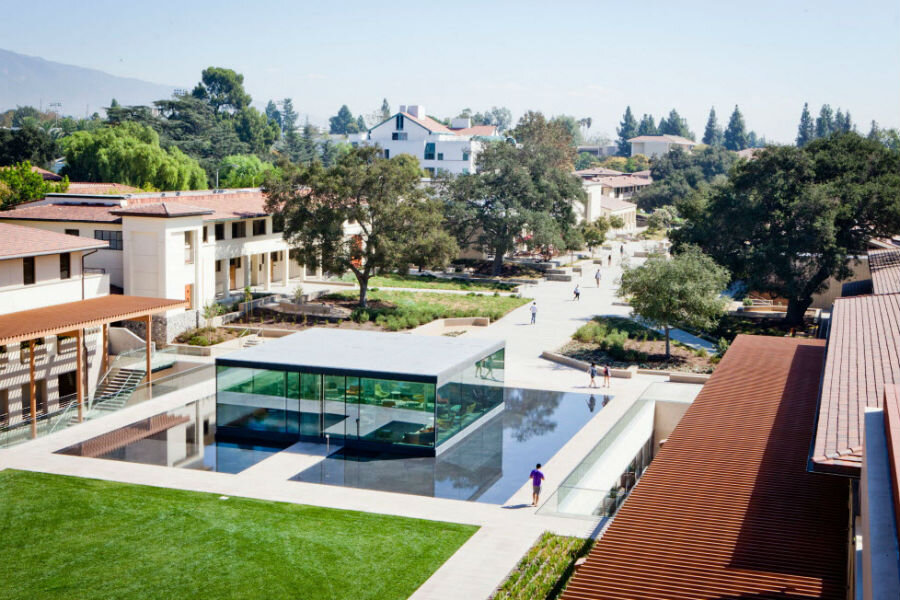Pitzer College: Black students seek nonwhite roommates
Loading...
Students at the Claremont colleges in Southern California initiated a fresh debate about race on college campuses when they narrowed their roommate search to "POC only," specifying in a Facebook post that they wanted only a person of color to join their off-campus apartment.
When a classmate challenged this roommate criteria, the Pitzer College student who posted the notice on Facebook doubled-down. “It’s exclusive [because] I don’t want to live with any white folks,” wrote Karé Ureña, who is black.
The latest Facebook controversy is a continuation of the ongoing dialogue about the creation of "safe spaces" for marginalized communities in Pitzer, neighboring colleges in the Claremont system, and colleges across the country.
Pitzer President Melvin Oliver, who became the first African American to lead a Claremont undergrad campus this year, called the post and some of the comments it inspired "inconsistent with our Mission and Values" in a message to the campus community.
"This is but another example to us that social media is not an effective platform to engage in complex dialogue on seemingly intractable critical issues that have varied histories and contested understandings. They create more heat than light and invite extreme viewpoints that intentionally obfuscate the nuanced context that surrounds these issues," President Oliver wrote.
The Claremont Independent reported the story on Tuesday, accompanied by a photo of a black man drinking from a water fountain labeled "for colored only," in an article that has been shared more than 5,000 times on Facebook.
Ms. Ureña, a junior at Pitzer, and one of her roommates, Sajo Jefferson, a sophomore at Pomona, have since taken down the post because they found a fourth roommate, but they defended it in a statement to The Washington Post.
“When and if you understand this context, it becomes clear that students of color seeking a living space that is all-POC is not only reasonable, but can be necessary,” they wrote to the Post. “We live in a world where the living circumstances of POC are grounded in racist social structures that we can not opt out of. These conditions threaten the minds, bodies and souls of people of color both within and without the realms of higher education. We are fighting to exist.”
Safe spaces began popping up across Claremont Colleges in November, as students mobilized for greater diversity in the school and support services for diverse groups that were represented.
According to school data from fall 2015, 48 percent of Pitzer's 1,067 undergraduates are white while 5 percent are African-American.
For example, The 5C Students of Color Alliance also held an event at Pomona College to provide a safe space for “healing” and “self-preservation” for students of color. “Come by to chat, work, vent, organize, express, and do anything else that will help sustain you with other students of color,” they write in a Facebook post. “As this is a space for students of color, please respect the space as such."
At the time, two CMC students issued a statement of concern about the "institutionalization of segregated spaces," arguing that while individuals were free to associate with whomever they chose, based on any arbitrary criteria, those groups should not be formed, hosted, or funded by the school.
Racial issues have been hotly debated at the Claremont Colleges this school year as student protestors pushed for the dean of students of Claremont McKenna College, another in the group of Claremont colleges, to step down in November after she wrote a highly criticized email to a Latina student saying she would work to serve those who “don’t fit our CMC mold.” Another outcome of November protests was the creation of new leadership positions on diversity and inclusion in academic and student affairs offices.
The Facebook post for off-campus housing, though, was distinct from safe spaces.
“I think that a POC-only housing policy is about as clear-cut an example of prejudice as one could find. I completely understand the desire not to live with people who could be racist, but excluding all white people is an extremely blunt instrument to achieve that end and a harmful overgeneralization,” one person commented.
Josue Pasillas, a senior and president of the Pitzer College Student Senate, told The Washington Post that requesting to live only with students of color was no different than having race-exclusive student organizations, such as the Black Student Union.
“A student of color’s preference to live with students of color only is not racist, and to call this housing segregation is wrong,” Pasillas told the Post. “Over time, people of color have been segregated by people with privilege, not vice versa. Students of color face systemic discrimination daily and have a right to live in solidarity with other students of color in spaces where they do not have to experience judgment and racism from others.”






